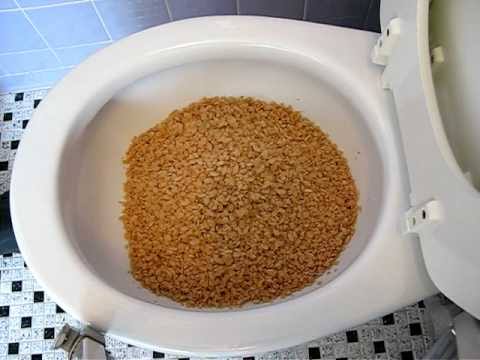Is it Appropriate to Flush Food Down the Toilet?
Is it Appropriate to Flush Food Down the Toilet?
Blog Article
The article underneath pertaining to Flushing Food Down the Toilet? is pretty much interesting. Give it a go and make your own personal conclusions.

Intro
Lots of people are often confronted with the problem of what to do with food waste, specifically when it involves leftovers or scraps. One common question that occurs is whether it's all right to purge food down the bathroom. In this write-up, we'll explore the reasons individuals could consider flushing food, the repercussions of doing so, and different methods for appropriate disposal.
Reasons why individuals may consider flushing food
Absence of understanding
Some people might not be aware of the potential injury brought on by flushing food down the bathroom. They might incorrectly believe that it's a harmless technique.
Benefit
Flushing food down the commode may feel like a quick and very easy remedy to taking care of undesirable scraps, specifically when there's no nearby trash can readily available.
Negligence
In many cases, individuals may simply pick to flush food out of sheer negligence, without thinking about the consequences of their actions.
Effects of flushing food down the bathroom
Ecological effect
Food waste that ends up in waterways can add to contamination and damage aquatic ecological communities. In addition, the water made use of to flush food can stress water sources.
Plumbing problems
Purging food can cause clogged pipes and drains pipes, triggering costly pipes repair work and inconveniences.
Types of food that ought to not be flushed
Fibrous foods
Foods with coarse textures such as celery or corn husks can get entangled in pipelines and cause obstructions.
Starchy foods
Starchy foods like pasta and rice can soak up water and swell, resulting in clogs in pipes.
Oils and fats
Greasy foods like bacon or food preparation oils need to never be purged down the commode as they can solidify and create obstructions.
Proper disposal methods for food waste
Using a garbage disposal
For homes geared up with waste disposal unit, food scraps can be ground up and purged via the plumbing system. Nevertheless, not all foods are suitable for disposal in this manner.
Recycling
Certain food product packaging materials can be recycled, lowering waste and minimizing ecological impact.
Composting
Composting is a green method to get rid of food waste. Organic products can be composted and used to improve soil for gardening.
The significance of appropriate waste management
Decreasing ecological damage
Appropriate waste administration techniques, such as composting and recycling, aid lessen contamination and preserve natural resources for future generations.
Safeguarding pipes systems
By preventing the technique of flushing food down the toilet, property owners can stop expensive pipes fixings and preserve the honesty of their pipes systems.
Verdict
To conclude, while it may be alluring to purge food down the commode for benefit, it is very important to recognize the prospective consequences of this activity. By taking on proper waste administration practices and taking care of food waste sensibly, people can add to healthier plumbing systems and a cleaner atmosphere for all.
FLUSH FOOD DOWN THE TOILET?
FLUSHING FOOD CAN CAUSE BLOCKED DRAINS IN YOUR HOME
All of the plumbing fixtures in your home are connected to the same sewer pipe outside of your home. This outdoor sewer pipe is responsible for transporting all the wastewater from your home to the Council sewer mains. Even small pieces of food that go down the kitchen sink can cause problems for your sewer. It should therefore be obvious that flushing larger bits of food, such as meat, risks a clog in either the toilet itself or the sewer pipes. Flushing greasy food is even more problematic because oil coagulates when it cools, coating the interior lining of your pipes.
THE TOILET IS NOT A BIN
Food isn’t the only thing that people shouldn’t be flushing down the toilet. People use the toilet to dispose of all kinds of things such as tampons, makeup wipes, dental floss, kitty litter and even underwear. Water goes to great lengths to educate residents about the high costs and stress placed on wastewater treatment systems simply from people flushing the wrong stuff down the toilet. It costs taxpayers millions of dollars each year, and homeowners thousands in blocked drain repairs.
FLUSHING FOOD IS A WASTE OF WATER
Flushing food is a waste of our most precious resource - water. In June this year Level 1 water restrictions were introduced to protect water supply from drought conditions. Much of New South Wales continues to be affected by prolonged drought with recent figures revealing up to 97 per cent of the state remains in drought. Depending on whether you have a single or dual flush toilet, every single flush uses between five and 11 litres of water. In the current climate this is a huge amount of water to be wasting on flushing food that should be placed in the bin (or better yet, the compost).
https://www.jabplumbingsolutions.com.au/blog/can-you-flush-food-down-the-toilet

I hope you liked our piece on . Thanks so much for spending some time to read our article. Are you aware of another individual who is fascinated by the topic? Please feel free to promote it. Thanks for going through it.
Contact Us Now Report this page